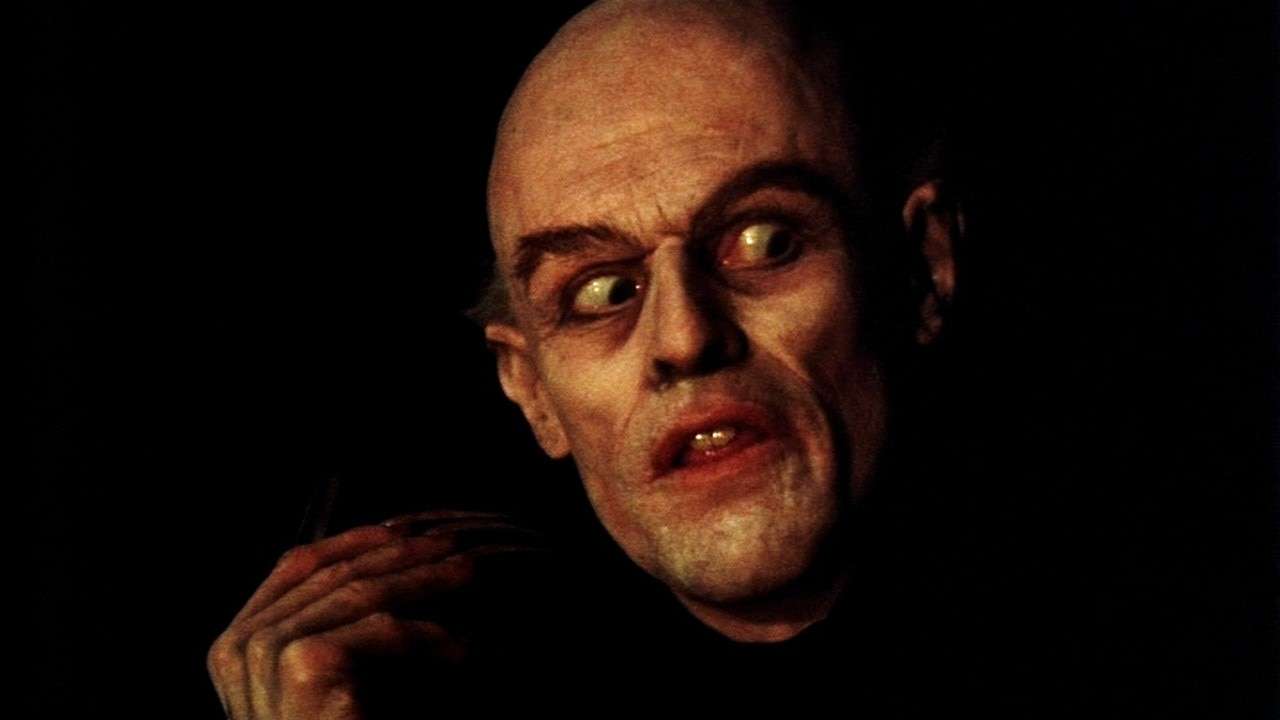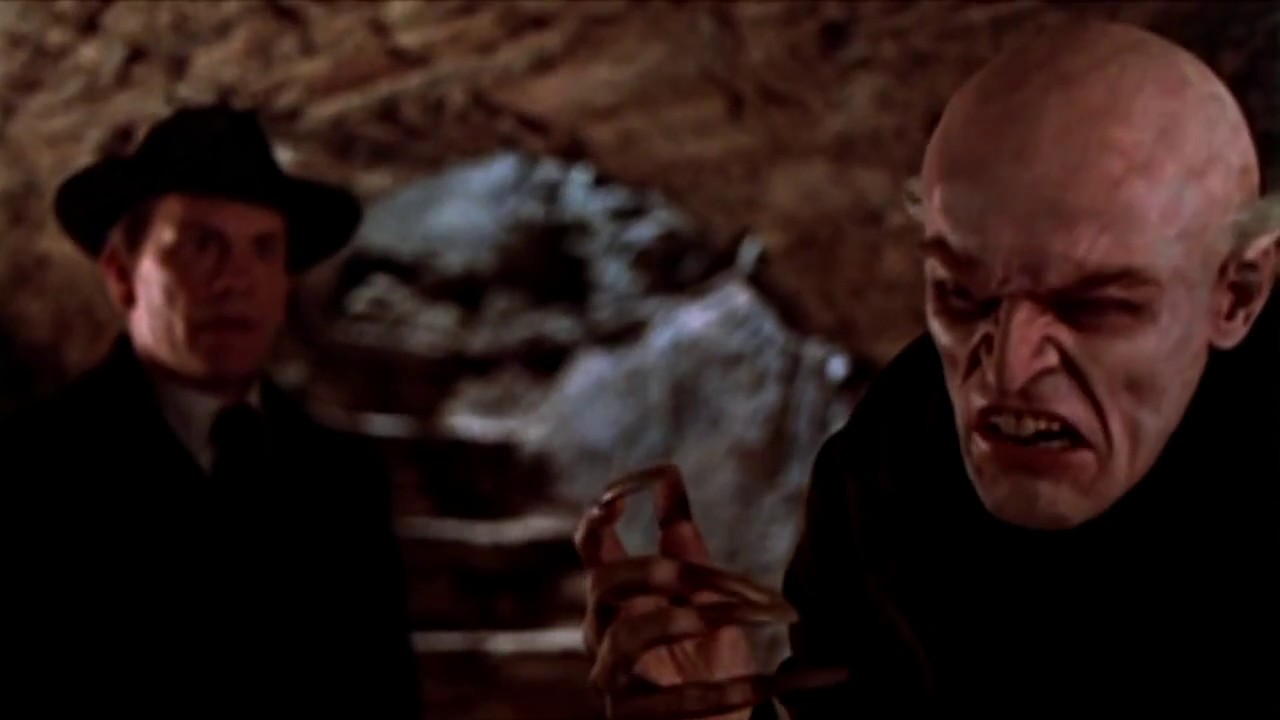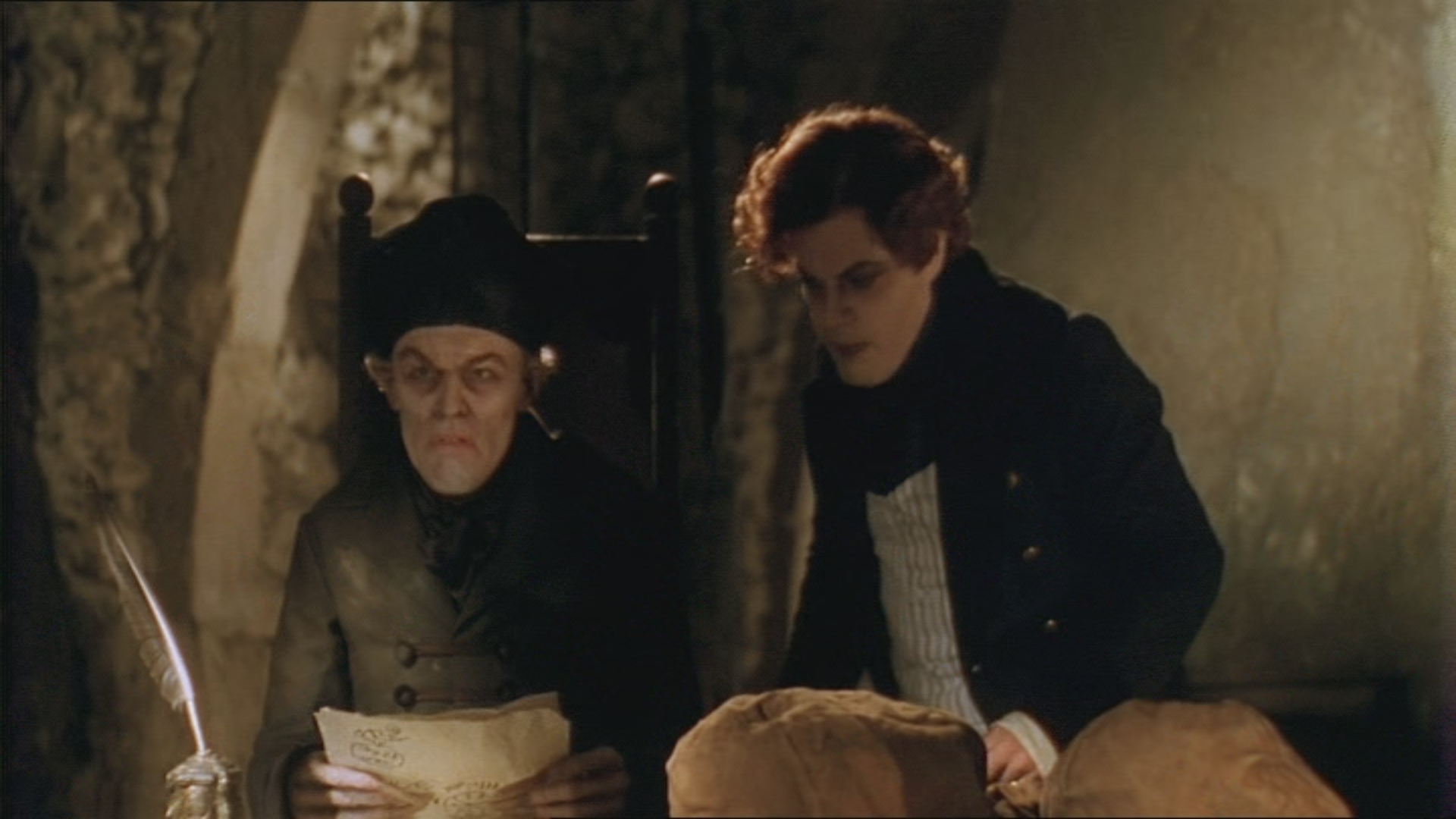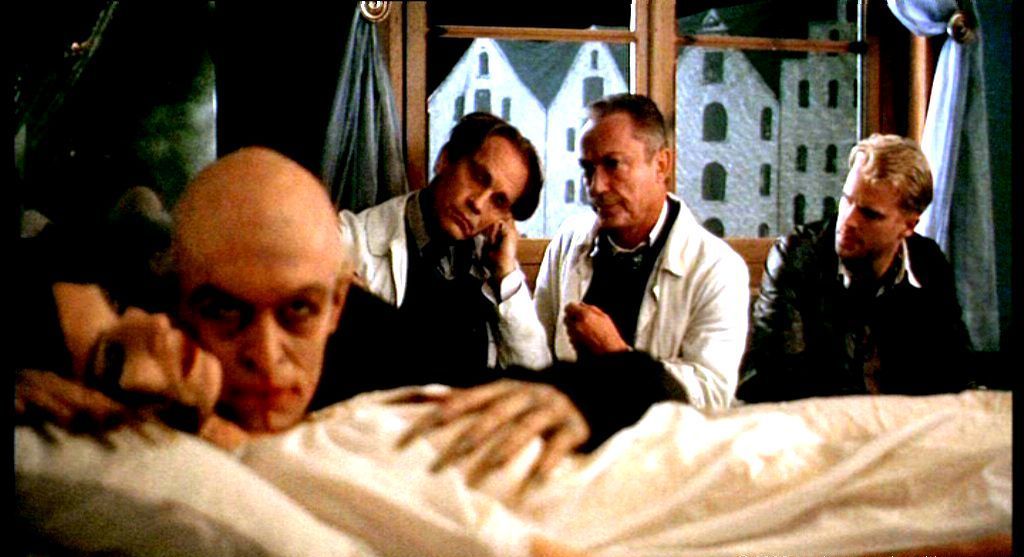SHADOW OF THE VAMPIRE. Filmmaker as a bloodsucker

…from regular folks to genuine heroes or even Christ; from positive characters to the worst villains. His face is so incredibly expressive that in a single moment, Dafoe can transform into someone completely different, almost starting anew, or indicate a change in his character’s nature with a single grimace.
Cinema loves him because he excels in both ambitious, small films and blockbusters, often allowing himself to play on the verge of caricature. Notably, even his less successful films are fascinating examples of his acting. Few actors would dare to take on such expressive roles, like Dafoe in Speed 2, where he tried to save one of the slowest action movies ever with a madness etched on his face. Or as Bobby Peru in Wild at Heart, where he sports the worst teeth in cinema (and meets a one-of-a-kind ending). He’s also taken on diverse roles in his Oscar-nominated performances – from playing the tragic Vincent van Gogh to being the motel caretaker in The Florida Project, and even over 30 years ago, he was Sergeant Elias, whose brutal death was even featured on the poster for Platoon. But perhaps his most extraordinary role, which earned him an Academy Award nomination, was in Shadow of the Vampire, where he portrayed a real blood-sucker.

Directed by E. Elias Merhige, this film is difficult to classify as a horror, even though it revolves around the titular monster and the behind-the-scenes production of one of the most famous horror films in cinema history – Nosferatu, from 1922. This German expressionist masterpiece is a precursor to vampire cinema and one of the earliest adaptations of Bram Stoker’s Dracula, although the filmmakers concealed any similarities to the novel after Stoker’s widow denied them the rights. So, it’s a film about making a film, but Shadow of the Vampire is less interested in the truth about what happened on the actual set and more focused on the famous rumor that the actor who played Nosferatu, Max Schreck, was, in reality, a vampire.
In Merhige’s film, only the director, the great Friedrich Wilhelm Murnau, knows the secret of his “actor,” presenting him to the crew as a devotee of the Stanislavski method who, during the shoot, truly became the character he portrayed, Count Orlok. Of course, Schreck’s appearance and behavior arouse unease and fear among the entire staff, which Murnau skillfully exploits – the more unpleasant the atmosphere on set, the better it is for the horror film being shot, which thrives on tension. Meanwhile, the vampire wonders who is expendable for the sake of the film, so he can feed.

This little film equates the act of filmmaking with monstrosity, comparing it to vampirism. After all, isn’t it true that Murnau becomes as ruthless a bloodsucker as Schreck, ready to sacrifice his people to make the best film possible? This analogy is clear from the beginning when we hear Greta Schröder (Catherine McCormack), who plays the leading female role, say that while the theatrical audience gives her life, the film camera takes it away. Thus, it is the director who wields the weapon of crime. John Malkovich portrays Murnau, turning his character into an authoritarian madman, and his genius is expressed every time someone addresses him as “Herr Doktor.” The director of Nosferatu is portrayed alternatively as a remarkable professional, a capricious artist (“The peasant girl entered my frame!”), and a sociopath who treats even the vampire as raw material. Their relationship, despite allowing the vampire to occasionally snack on the crew, places Murnau in charge of the situation. Only in one scene does he make himself humble before the immortal power.

As for the vampire, he is often amused at being considered an actor. He doesn’t pretend to be human because he doesn’t have to, but he readily embraces the perks of stardom, like requesting makeup. Initially, he terrifies the crew, but after a while, they get used to his fully committed transformation. Merhige and screenwriter Steven Katz infuse their film with a good deal of humor, which arises from the ignorance of everyone except Murnau about his actor’s true nature. In one scene, after the vampire catches a bat in mid-air and drains its blood, someone says, “Schreck, German theater needs you.” But the vampire played by Dafoe is a tragic character, terribly lonely, too old to remember his origins, and yearning for sunlight. Cinema provides him with a brief illusion of being human, but the illusion fades as he starts making plans to eliminate someone from the crew, laughing at the director’s ambitions. When he mentions that he read Stoker’s Dracula, he points out things that no mortal would react to, such as the vampire’s difficulty in preparing dinner for his living guest. Yet, he behaves like a human, getting drunk on wine in the company of the producer and screenwriter, and, above all, desiring the actress who plays his victim. He only cares about her blood, but the creators of Shadow of the Vampire never explain why she is the reward for his participation in Murnau’s film.

There are more ambiguities and inconsistencies in Merhige’s film – he focuses more on the dual portrait of his characters than on the plot. Although this is a fascinating film, it lacks the nerve, horror, and fright it tells. Instead, the director chooses the atmosphere of interwar cinema, giving the whole a retro look but avoiding bolder techniques (the cinematography resembles a television production from the 1980s). However, he has fun, just like the film’s Murnau, by casting actors already familiar with vampire themes in important roles – the producer, played by Udo Kier, appeared as the titular Count in Blood for Dracula at the beginning of his career, and Cary Elwes, who plays the role of the second cameraman here, pursued Gary Oldman in Coppola’s Dracula. One of the producers of Shadow of the VampireShadow of the Vampire is none other than Nicolas Cage, who once went mad on screen in the satirical Vampire’s Kiss.

And then there’s Dafoe, who briefly appeared on screen 17 years earlier in the iconic The Hunger. His Max Schreck / Count Orlok not only sends us back in time to Murnau’s masterpiece, to that iconic vampire, but also creates a completely different monster, full of self-reflection on his own nature, mocking, and at times more human than one might initially suspect. Dafoe seems to know no boundaries when it comes to portraying such a character, in one scene endowing him with the most unnatural facial features an actor can have, and in the next, making him suffer in solitude and recite Tennyson. His vampire received two Oscar nominations – one for the role itself and one for the makeup. It is impossible not to get the impression that at least in part these honors are due to the original Nosferatu, but on the other hand, he is not even half as complex a character as Dafoe’s vampire in Shadow of the Vampire.

